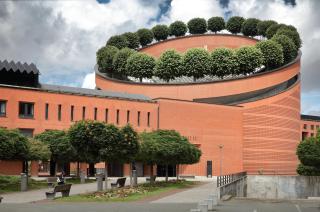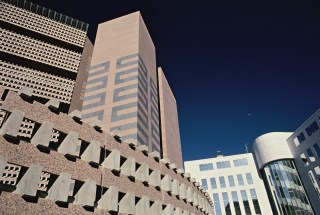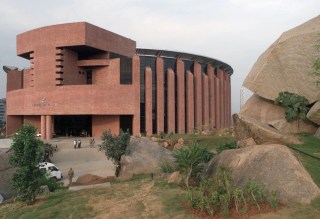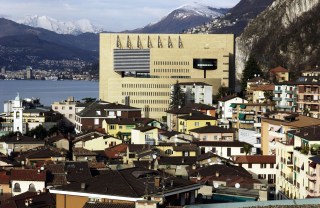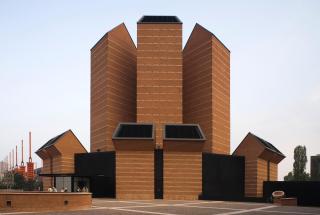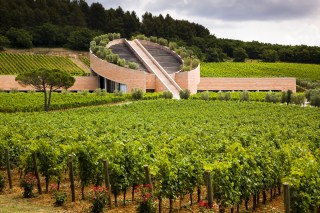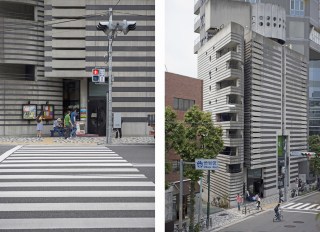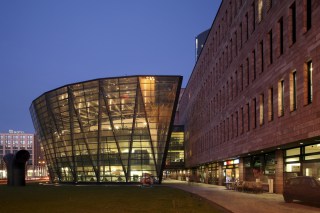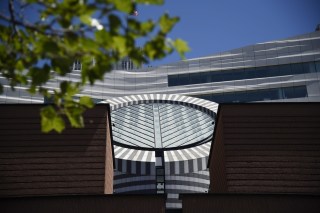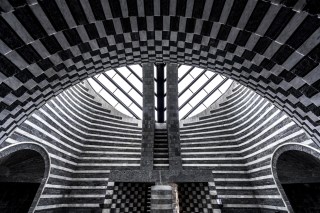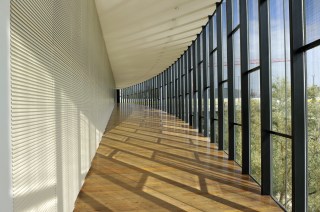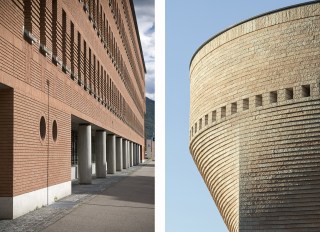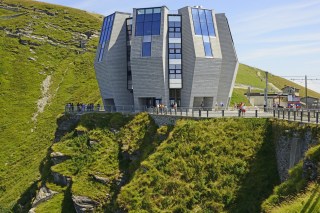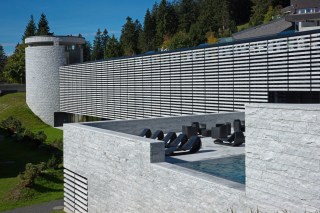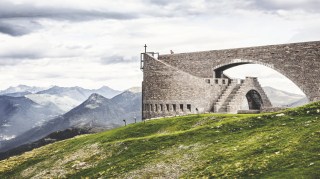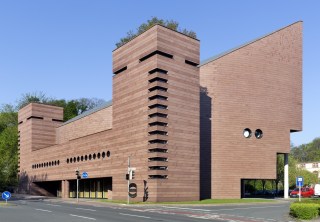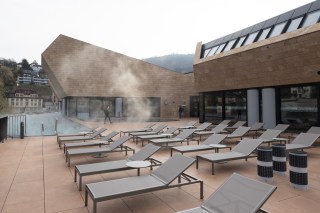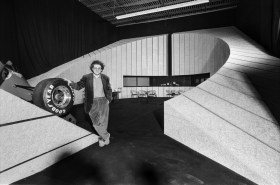Even after 60 years of designing churches, spas, museums and casinos, the Swiss-Italian grand master of architecture continues to work. A tribute.
This content was published on April 01, 2023
minutes
Thomas Kern
The world-famous Swiss architect turns 80 on April 1, but retirement is not an option. Mario Botta is still involved in big projects. In September he will inaugurate the Space Eye, the largest telescope in Switzerland, as well as a planetarium and an exhibition center at the Observatory for Space and the Environment in the Gantrisch Nature Park near Bern.
In the meantime, he is still working on the new university campus of Luxun Academy of Fine Arts in Shenyang, China, a project he has been involved in for over a decade.
Botta doesn’t take vacations. Architecture is “a profession that allows me to age well as long as I maintain a critical awareness,” he recently told the Swiss daily 24 heures.
Born in Mendrisio in the canton of Ticino in 1943, Botta studied in Venice, where he had the opportunity to work in the studio of the French-Swiss architect Le Corbusier, considered one of the pioneers of modern architecture.
He was also in the circle of Louis Kahn, an influential American modernist architect. With such a promising start and strong credentials, Botta could have continued his career elsewhere in Europe or the United States. Instead, in 1969 he decided to open his own studio in Mendrisio.
The influence of the two masters is still evident in Botta’s style, with its simple, geometric forms; his preferred material is brick. Although his work ranges from residential buildings to thermae, universities and theaters, Botta is usually referred to as the contemporary religious architect par excellence.
In the canton of Ticino, some of its churches and the monumental casino are in Campione, a small Italian enclave in the southern Swiss canton. His churches can also be found in Italy.
Not forgetting the Cymbalista Synagogue in the Israeli city of Tel Aviv. These projects impress with their late modern concepts, but they also draw on the past and respect the specifics of the place and the elements – both material and immaterial.
Botta developed a set of principles that guide his architecture. Location comes first when thinking about construction. “The terrain is an integral part of the project and never an accidental element,” he says. Second is the importance of light, which “creates space, sets accents and rhythm, defines space and creates balance in structure”.
His fondness for natural materials and geometry brings him close to another Swiss architectural giant, Peter Zumthor. But Botta goes much further when it comes to the importance of respecting the past and the ethical aspect of architecture.
For Botta, it’s about “offering quality of life and not just aesthetic images. The search for a better quality of life continues through the search for a better place to live.”
Parallel to his projects, he has also played an important role in teaching. In addition to his work as a professor at the Swiss Federal Institute of Technology in Lausanne (EPFL) and as a visiting scholar at the Yale School of Architecture in the USA, Botta was a driving force behind the founding of the Architecture Academy in Mendrisio in 1996.
He designed the first program of the school, where he was a lecturer for many years before being appointed Dean of the school.
Ephemeral Works
In 2022, two of his projects in Switzerland were badly damaged. In June, several steps of the majestic Moron Tower in the municipality of Malleray in the Bernese Jura collapsed. And in September, his high-altitude restaurant above Glacier 3000 in Les Diablerets, in the French-speaking canton of Vaud, was destroyed by fire.
Both incidents came as a “surprise” to Botta and he pointed out the transience of all human achievements. “Architecture is very fragile, much more fragile than we imagine,” he explained.
Translated from English: Marc Leutenegger

In accordance with JTI standards
More: JTI certification from SWI swissinfo.ch



